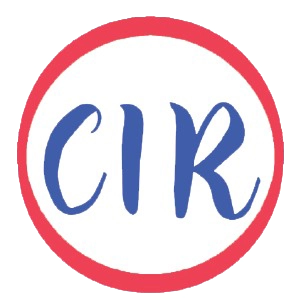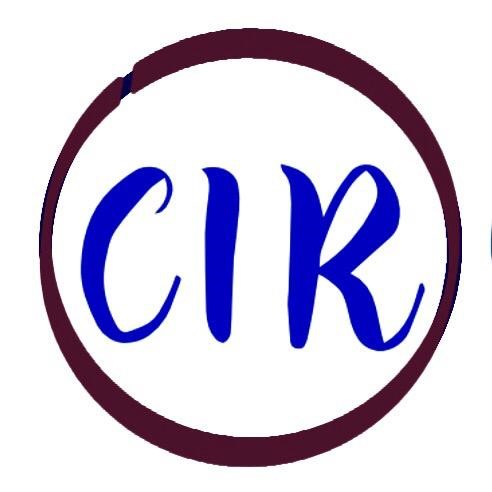By Gagani Weerakoon
When Nuwan (name withheld) along with 30 manpower contract workers came to a Katunayake Export Processing Zone site to load waste piled up on the ground back to containers, a mask and a pair of gloves were all they were given to wear.
However, after the first day, Nuwan and 12 others developed a rash on both hands and had to seek medical treatment as the blisters and the irritation were unbearable.
They were told it was just a pile of mattresses. However, they found it was otherwise .
“There were items that resembled carpets, sheets, linen resembling those in hospitals and the stench was unbearable. Within hours our skin started burning – probably due to toxic fumes escaping from the waste,” Nuwan said.

Nuwan was given an ointment to apply on the skin where irritation was felt while some of his colleagues continued working in the yard. He didn’t return.
“I felt disgusted. Even though we didn’t know what was in that waste dump, it was more than mattresses.
Every time I think of that waste pile, my body subconsciously responds as I vigorously scratch my hands,” Nuwan said while unintentionally scratching his hands, where marks remained from healed blisters, recalling what happened months ago.

Saman (name withheld), a permanent employee of Hayleys Free Zone Limited (HFZL) said they were told the containers carried mattresses from a UK company which will be processed and re-exported.
He said a machine was brought down and the processing of mattresses continued for a few months since October 2017. However, once the machine broke everything that was unloaded was piling up on the ground for almost two years, he said.

Clinical waste
Later Saman and Nuwan realised that they had been working with probable clinical waste including human body parts from waste sent in containers from the UK.
“After CEA officials visited the site for inspection, the management asked us to delete all photos and videos we had in possession. They made sure all such photos taken from 2017 are deleted,” he said.
Asked as to why none of them alerted any authority about the waste dump, Saman admitted that they did not realise the gravity of the matter, even though they felt like they were working at the Meethotamulla garbage dump.
“The stench was unbearable. Unlike others in the Free Trade Zone we are not part of any trade union. We are more concerned about job safety than our health,” Saman added.
It later transpired the containers Saman and Nuwan unloaded came to Sri Lanka as part of a trade deal.

Unaware of trade deal
But local authorities including the Central Environment Authority (CEA), the apex body of protecting the country’s environment, were unaware of any such trade deal where post consumer waste is imported till Sri Lanka Customs informed them in May 2019 of suspicious containers at the Colombo International Container Terminal (CICT).
It was after several weeks that the CEA and the Customs found out that a stock of over 2,400 metric tons of post consumer waste imported from the UK was openly dumped at a site of Hayleys Free Zone Limited – a few hundred metres from the BIA , posing a threat to the environment and people in the area.
The heap of waste still lies unattended for more than two years and speaks loud and clear of the need for strict environmental regulations and the inability of local authorities to take stern action against perpetrators due to the lack of resources and expertise.
Despite institutions and individuals raising concerns of possible health threat as it was suspected to include clinical waste, local authorities are still struggling to ensure public that they are completely safe and there is no cause to panic.
A total of 242 containers have been imported by the Ceylon Metal Processing Corporation (Pvt) Ltd and their Freight Forwarder ETL Colombo (Pvt) Limited.
However, 130 containers have been cleared by Hayleys Free Zone, under Government concessions.
The other 112 containers are still detained by Customs. Workers including Nuwan and Saman from two manpower agencies loaded the waste dumped on the ground from 130 containers to 333 containers.

Nothing happened
No tangible action has been taken on the suspicious waste dumping even though it is more than six months since the authorities were alerted and Sri Lankan authorities threatened the UK of taking action based on the BASEL Convention on waste dumping.
In contrast, Malaysia last month sent back 150 containers packed with plastic waste to 13 wealthy nations, putting the world on notice that it will not be the world’s garbage dump.
The countries receiving their trash back include the US, the UK, France and Canada. Unfortunately, Sri Lanka is still struggling with the waste.
There were dozens of letters and reports exchanged between Sri Lanka Customs, the CEA, the Government Analyst’s Department, Atomic Energy Authority and the Medical Research Institute (MRI).

Failed
However, these institutions have so far failed to assure residents and thousands of workers in the Free Trade Zone that there was no foreign waste contamination in both water and air in the area.
The repatriation of waste to the country of origin appears a far-fetched task with the Environment Agency in UK demanding more clarity regarding the waste containers.
“Inform us of the location of the containers that were emptied at Hayleys Free Zone Ltd? How can you be sure that the waste emptied here was waste which originated from the original 130 containers?,” Lesley Worswick in his letter to CEA Director General Hemantha Jayasinghe on 1 November 2019 has queried.
The Environment Agency of UK has communicated with the CEA and the Ministry of Justice to send a team of specialists to Sri Lanka to carry out further investigations.
When contacted, spokesperson of the British High Commission in Colombo stated that the UK was committed to tackling the illegal export of waste and UK authorities were working closely with their Sri Lankan counterparts to ensure that the export of these waste containers is fully investigated.
The UK is also working with the Sri Lankan authorities to ensure the waste is returned to the UK as soon as is practicable, the spokesperson said.
“The Environment Agency is seeking agreement for investigators to visit Sri Lanka to collect evidence with the assistance of the relevant Sri Lankan authorities. It is important that investigations are conducted with due care,” he added.

Lengthy discussions
However, Justice Secretary J.J. Ratnasiri said after having lengthy discussions with the CEA, the Attorney General’s Department and the Justice Ministry, it was decided to enhance resources currently lacking in relevant institutions.
“Why should we let a foreign team to carry out investigations? If we have shortcomings in expertise or available laws these need to be addressed.
Anyway, the future of the UK waste will be decided once the Court ruling is given,” he said. The Court ruling was scheduled to be given on 13 February, however, it was put off for another day.
The CEA meanwhile said they were unaware of the outcome of the discussion at the Justice Ministry. “We have not been officially notified whether they took a decision to allow the UK expert team or not. They have sought permission to visit and meet the parties involved,” CEA spokesperson said.
While authorities engage in this tug-of-war, the imported waste dump will continue to rot along with Sri Lanka’s reputation as the world’s number one tourist destination being at stake.
Officials from the CEA during their July 2019 inspection observed that leachate generated due to absorption of rain water was flowing through the storm water drain system to the environment as the site does not have a storm/waste water treatment facility.
Approximately 2,400 metric tons of waste in these 130 containers was dumped at the site. Following CEA’s visit in July 2019, the Hayleys FZL was ordered to cover the waste dump so that it will not be exposed to rain water.
It was also observed that fibre particles of mattresses spread into the environment with the wind due to processing activities.
CEA Director General Hemantha Jayasinghe, in a letter to HFZL Director strictly advised that the BOI-registered company should take immediate action to re-export all the waste to the country of origin, and until such time, the waste dump should be covered to prevent the generation of leachate and dispersing of fine fibre particles.
It was as a result of this directive, that Nuwan and 30 others loaded the waste heap to 333 containers.
The Court of Appeal entrusted the responsibility of determining the exact nature of the goods in waste containers with the Government Analyst.
However, determining the exact nature of goods has been problematic as the Government Analyst Department found it difficult to carry out investigations due to a lack of resources as the subject did not fall within their area of expertise.
Following this, in a report to BOI Director General, Sri Lanka Atomic Energy Regulatory Council in August 2019 informed that measured radiation levels around the containers and waste were free from radioactive contamination.
However, the Bio Safety Committee of the MRI has recommended to consider this consignment as infectious material when handling the contaminated cargo.

Access denied
Sarath Peiris, Chairman of Seeduwa-Katunayake Urban Council, under whom Free Trade Zone comes, is appalled by the ignorance displayed by the BOI in letting foreign waste dump piling up and aggressively denying any access to outsiders when residents got to know about ‘foreign waste’.
“The Free Trade Zone may come under BOI jurisdiction. The people in the area who may have come into contact with soil, air or water contaminated by this waste dump come under my jurisdiction,” Peiris said.
“It is ironical that the BOI which doesn’t even allow a single person to enter the Free Zone without a licence, allowed foreign waste to pile. Don’t’ they have a responsibility to know what actually comes into the Zone.”
‘No-entry’ zone
He also noted that the BOI and Hayleys management decision to treat the site strictly as a ‘no-entry’ zone for people’s representatives like him and the Media, will not serve any purpose.
“People have a right to know what sort of toxic waste they have been inhaling in the past two years,” he said.
Director of the Hazardous Waste and Chemical Management Unit of the CEA, Ajith Weerasundara insisted that according to the National Solid Waste Management Policy and the Basel Convention, importation of post consumer waste was prohibited.
“Also, due to health risks associated with imported materials, the CEA cannot permit the entry of such material” he said.

[This report was produced under the CIR Investigative Journalism Fellowship Program 2019/20]


